How to Choose Batteries for a Professional Drone?
In the world of unmanned aerial systems (UAS), batteries are the lifeblood that powers professional drones. These advanced devices, used for purposes ranging from aerial photography to industrial inspection, require reliable, high-performance power sources. But how do you choose the right battery for your professional drone? In this guide, we’ll explore what defines a professional drone, the main types of professional drones, and key factors to consider when selecting a battery.
What Is a Professional Drone?
A professional drone is a high-performance, specialized UAV (unmanned aerial vehicle) designed for specific, often commercial or industrial purposes. Unlike consumer drones, which are primarily used for recreational activities like hobbyist photography or short-range flights, professional drones are built for endurance, precision, and versatility. They are used in a wide range of industries, including photography, videography, agriculture, construction, and inspection.
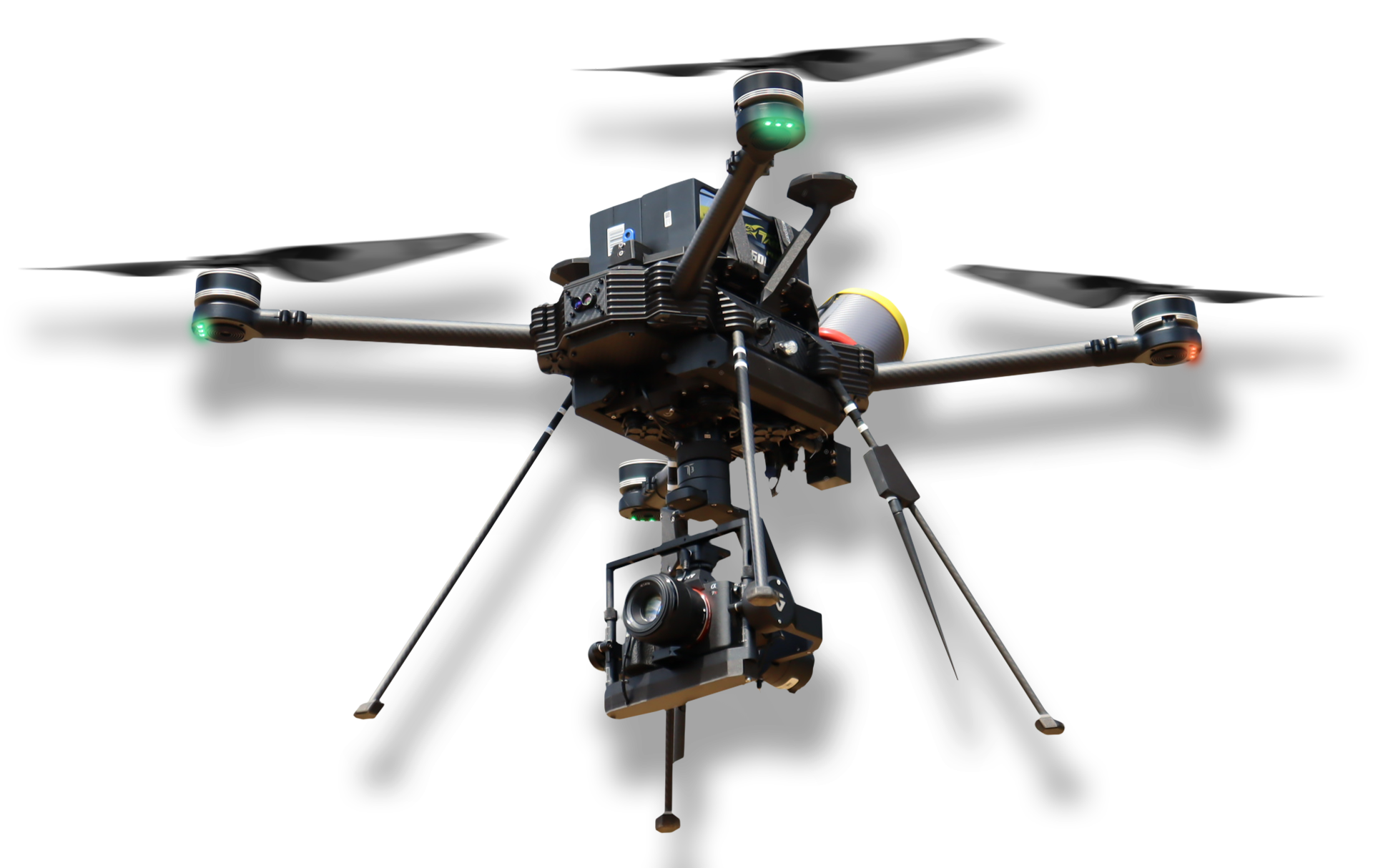
What are the Main Types of Professional Drones?
There are several main types of professional drones:
By Applications
●Photography and Videography Drones: These drones are equipped with high-resolution cameras and are used to capture aerial images and videos. They are popular among hobbyists, photographers, and filmmakers for personal and professional projects.
●Cinematography Drones: Designed for film production, these drones carry advanced camera systems capable of capturing high-quality, cinematic footage. They often have stabilization features and can handle heavier cameras used in the film industry.
●Mapping and Surveying Drones: These drones are used for generating 3D maps and topographical surveys. They often use GPS and photogrammetry techniques, making them ideal for construction, mining, and land surveying applications.
●Precision Agriculture Drones: Used in farming, these drones monitor crop health, track water usage, and spray pesticides or fertilizers. They provide detailed aerial views, helping farmers optimize yields.
Delivery Drones: Designed for the transport of goods, these drones are capable of carrying packages to specific destinations. Companies like Amazon and UPS are experimenting with them for last-mile deliveries.
●Inspection Drones: These are used to inspect hard-to-reach or dangerous areas, like power lines, wind turbines, bridges, and industrial facilities. They help reduce the need for human inspections and can gather data quickly.
●First Responder Drones: These drones assist emergency services by providing real-time aerial views during incidents. They are useful in assessing natural disasters, accidents, or other emergencies, helping with search and rescue or situational awareness.
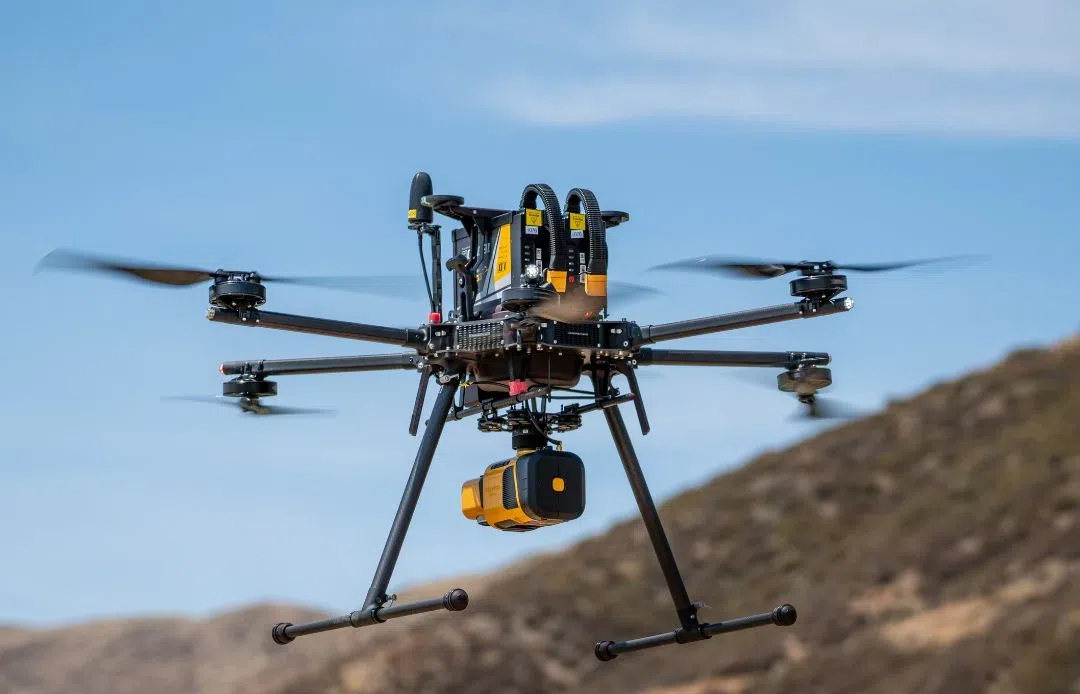
By Features
●Thermal Imaging Drones: Equipped with thermal cameras, these drones capture infrared data to detect heat signatures. They're used for search and rescue, firefighting, inspections, and wildlife monitoring.
●Autonomous Drones: These drones operate without direct human control and use AI to make decisions in real-time. They are used in various sectors, such as delivery, agriculture, and inspections, and are capable of executing tasks with minimal human intervention.
What Drones Do Professional Drones?
Understanding the different types of professional drones helps narrow down battery choices, as different models have varying power requirements:
Multirotor Drones
Multirotor drones use multiple rotors (usually four to eight) to hover and maneuver in place. They offer precise control, making them ideal for tasks requiring stability, such as aerial photography, surveillance, mapping and inspection. However, their flight time is typically shorter due to higher energy consumption.
Fixed-Wing Drones
Fixed-wing drones resemble small airplanes, using wings to generate lift. They are more energy-efficient and can cover larger areas over longer distances. These drones are often used for long-distance mapping, surveying, and environmental monitoring. However, they require a runway or open space for takeoff and landing and cannot hover.
Hybrid Drones (VTOL)
Hybrid drones, also known as Vertical Takeoff and Landing (VTOL) drones, combine features of both multirotor and fixed-wing drones. They can take off and land vertically like a multirotor and transition to efficient, long-distance flight like a fixed-wing drone, making them versatile for a range of applications, from surveying to inspection.
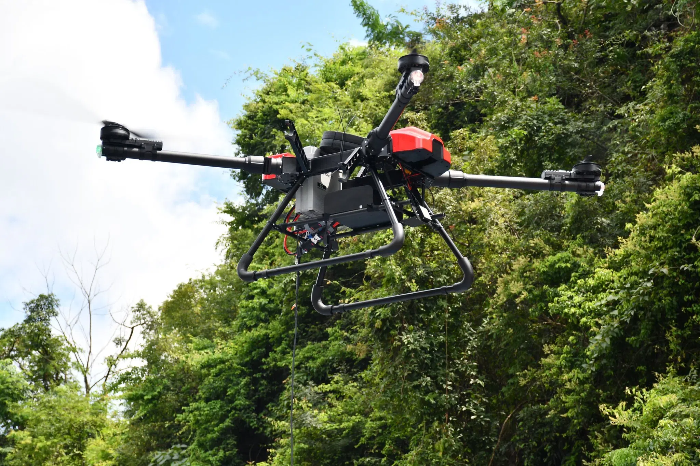
How to Choose Batteries a Professional Drone?
The most important factors for a battery are its voltage and capacity. Here, I’ll mainly explain how to choose the right voltage and capacity for your reference. Typically, when you buy a drone, there will be a battery compatibility guide or specification sheet to help you out. Make sure to refer to the manual regularly for guidance.
Voltage (V)
The motor of the drone is the primary factor that determines the required battery voltage. Motors are rated for specific voltages (e.g., 4S, 6S), and the battery voltage must match the motor's design. For example, a 4S motor requires a battery with a nominal voltage of around 14.8V.
Higher-voltage batteries provide more power, which is especially crucial for heavier drones or those with multiple rotors. Most professional drones operate on 4S (14.8V), 6S (22.2V), or even 12S (44.4V) batteries, depending on the power requirements. Besides, you should consider following factors:
●Desired Performance and Flight Efficiency
More Power vs. Efficiency: Higher-voltage batteries enable the motor to spin faster (higher RPM), which is useful for drones that need speed, agility, or the ability to lift heavy loads. However, higher voltage can also increase power consumption, reducing flight time if not balanced with efficiency.
Lower Voltage for Endurance: If your goal is longer flight times with less demanding performance, a lower-voltage battery (e.g., 3S or 4S) may be more appropriate, as it draws less current and is more energy-efficient.
●ESC Compatibility
ESC Voltage Range: The ESC (Electronic Speed Controller) must be compatible with the battery voltage and motor requirements. ESCs are designed to handle a specific range of voltages. Using a voltage outside this range could damage the ESC or lead to inefficient power delivery.
●Weight and Size Constraints
Drone Weight: Higher-voltage batteries tend to be heavier, and weight impacts the drone's agility and flight time. If your drone has strict weight limits or if agility is a priority, you may need to balance voltage with overall weight.
Space Constraints: Higher-voltage batteries are often larger, so the available space on your drone to accommodate the battery size may also be a deciding factor.
●Drone Application
High-Performance Drones: For drones used in professional applications that require a lot of power—such as racing, heavy lifting, or high-speed aerial photography—higher voltage (e.g., 6S) is preferred for the extra power output.
Surveying or Mapping Drones: Drones used for long-distance surveying or mapping may opt for lower voltage (e.g., 3S or 4S) to prioritize energy efficiency and longer flight times over raw power.
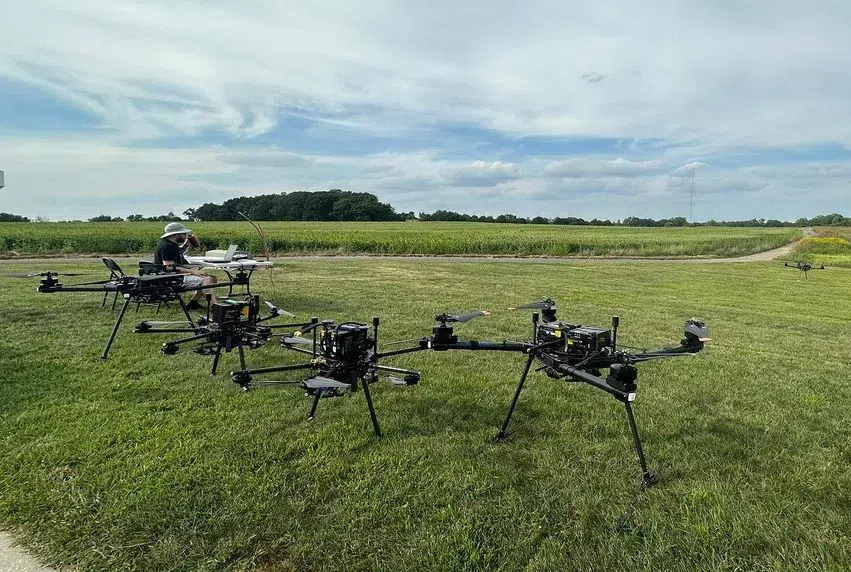
Battery Capacity (mAh)
When choosing the capacity of drone batteries, there are main and secondary factors that influence the decision. The capacity of a battery is typically measured in milliamp-hours (mAh) and determines how long the drone can stay airborne. For professional drones, capacities often range from 4,000 mAh to 20,000 mAh or more.
Here's a breakdown of the key factors:
●Flight Time Requirements
Primary Consideration: The most important factor in choosing battery capacity is how long you want the drone to stay in the air. Larger capacity batteries (measured in mAh) will provide longer flight times.
Application-Specific Needs: Different drone applications require different flight times. For example, aerial photography drones may need longer flight times for extended shoots, while racing drones prioritize agility over endurance.
●Drone Weight and Payload
Battery Weight Trade-off: Higher-capacity batteries are heavier. The added weight can reduce the drone’s flight efficiency and agility. The drone’s total takeoff weight, including payload (cameras, sensors), must be considered, as heavier drones consume more power.
Balancing Act: It’s essential to strike a balance between battery capacity and the overall weight of the drone, especially if you're carrying additional equipment like cameras or sensors.
●Power Consumption of the Drone
Motor and Propeller Efficiency: The drone’s motors and propellers determine how much power is consumed during flight. Drones with powerful motors or those that fly at high speeds or carry heavy loads will drain batteries faster, necessitating higher-capacity batteries to meet flight-time goals.
Hovering vs. Forward Flight: Hovering multirotor drones consume more power than forward-flying fixed-wing drones, meaning they typically need higher-capacity batteries for the same flight duration.
●Battery Voltage (V)
Battery Capacity and Voltage Relationship: Battery capacity is closely related to voltage. If your drone uses a higher voltage (e.g., 6S or 22.2V), you might need slightly lower capacity because the higher voltage provides more power. For lower-voltage setups, a higher capacity (mAh) is usually required for longer flight times.
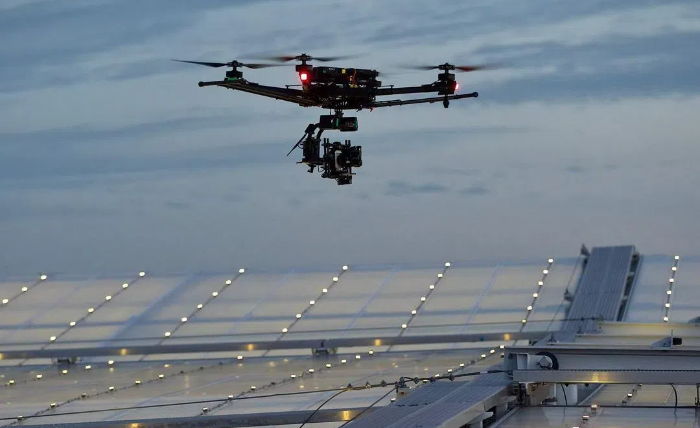
Other Considerations
●Discharge Rate (C-Rating)
The C-rating indicates how quickly a battery can release its energy. Professional drones that need rapid bursts of power, such as those used for racing or carrying heavy payloads, require a high C-rating (20C to 50C or more). For general use, a lower C-rating (10C to 20C) is usually sufficient.
●Battery Management System (BMS)
A good Battery Management System helps monitor temperature, voltage, and overall battery health. Many professional drones come equipped with smart batteries that include BMS, ensuring safer and more efficient operations.
Conclusion
Choosing the right battery for your professional drone is crucial for optimizing performance, safety, and operational efficiency. LiPo and semi solid state batteries dominate the market for professional drones, with considerations around battery capacity, voltage, discharge rate, and environmental factors influencing your final choice. By matching the right battery to your drone's specific requirements, you can ensure longer flights, safer operations, and better overall results in your professional endeavors. As a global leading lipo battery manufacturer, Grepow offers high discharge rate and high energy density UAV batteries to meet the needs of all knids of professional UAV and drone applications. If you have any questions or needs, please feel free to contact us at info@grepow.com.
Related Articles
-

The Evolution and Challenges of Low-Altitude Economy
2025-07-01 -
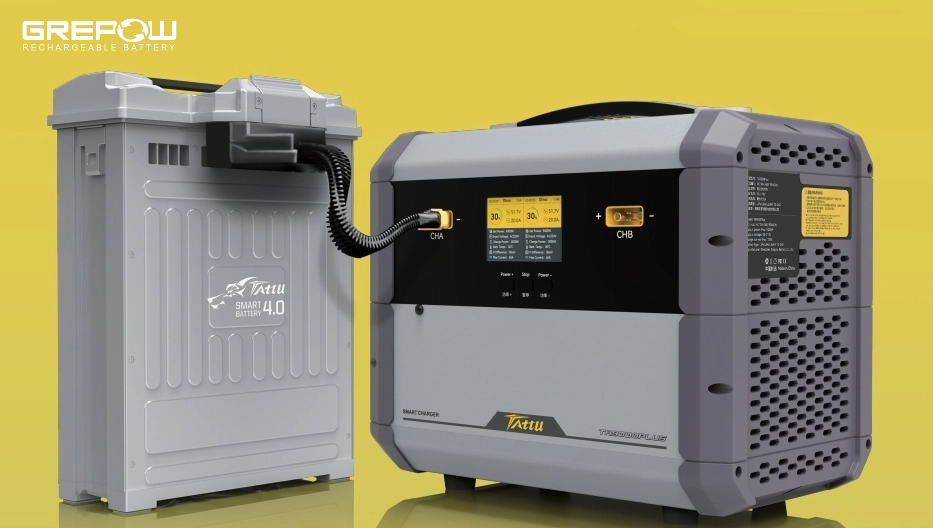
Drone Batteries: A Comprehensive Guide
2025-06-23 -
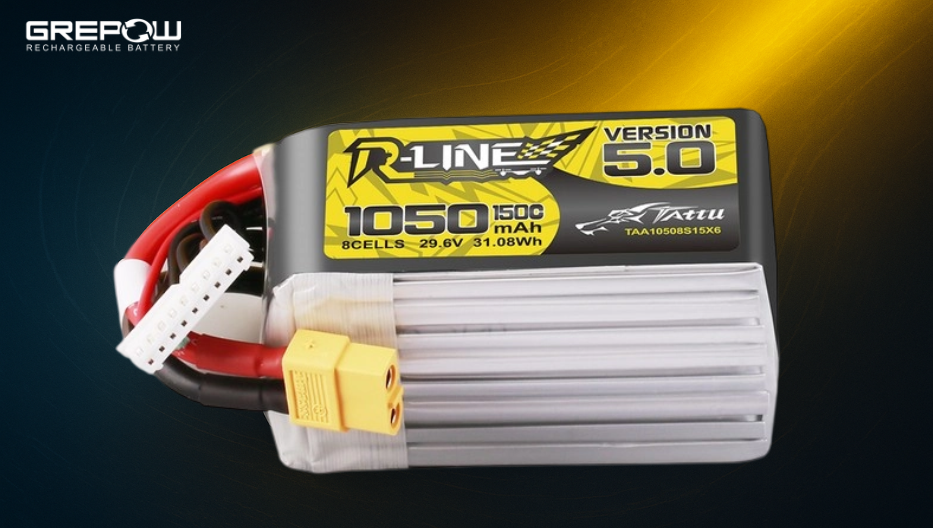
What is an 8S LiPo Battery?
2025-06-20
Related products
-
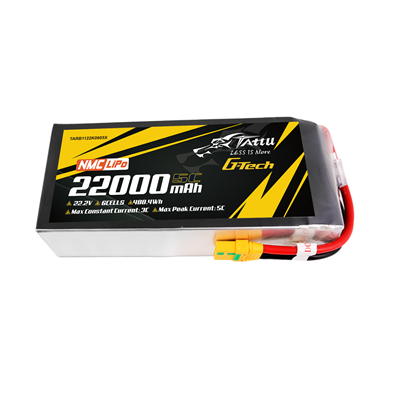
22000mAh 22.2V 6S Semi-Solid State Battery Pack with G-Tech
-
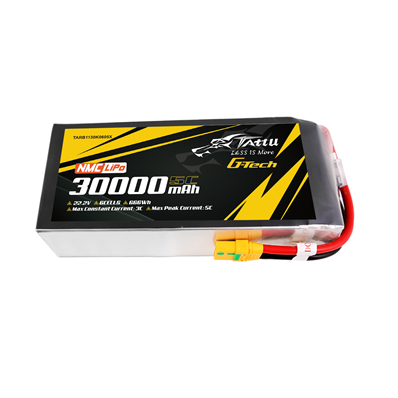
30000mAh 22.2V 6S Semi-Solid State Battery Pack with G-Tech
-
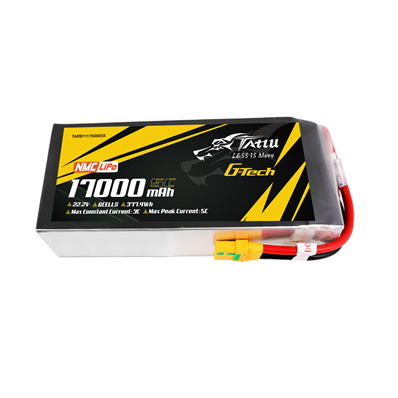
17000mAh 22.2V 6S Semi-Solid State Battery Pack with G-Tech
















































